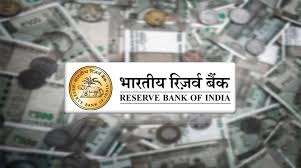
Follow WOWNEWS 24x7 on:

The Indian rupee opened weaker by 0.17 percent on August 26, 2025, against the US dollar at 87.7275 compared to the previous close of 87.5800. This subtle decline reflects ongoing market dynamics influenced by banking sector liquidity and government cash flow movements overseen by the Reserve Bank of India (RBI).
Key Highlights Reflecting Current Monetary and Currency Conditions
The Reserve Bank of India reported banks’ aggregate cash balances at Rs 9.63 trillion as of August 25, indicating ample liquidity in the banking system.
India’s government surplus cash balance with the RBI stood at nil as of August 25, suggesting an active fiscal expenditure or borrowing stance.
Refinance through RBI facilities amounted to Rs 106.86 billion on August 25, representing significant short-term liquidity support extended to banks.
Commercial banks borrowed Rs 18.37 billion through the marginal standing facility (MSF) on August 25 to meet immediate funding needs.
The marginal dip in the Indian rupee against the US dollar aligns with external factors and domestic liquidity conditions influencing forex markets.
Understanding Liquidity Trends and Their Influence on the Rupee
The banking system in India is currently flush with liquidity as evidenced by the cash balances with RBI, providing a cushion that supports credit availability and economic activity. However, the near nil surplus cash held by the government signals heightened government spending or active borrowing which can exert pressure on money markets and influence currency movement.
Higher refinance amounts by RBI reflect proactive liquidity management ensuring the banking system can maintain operational smoothness.
Banks opting to borrow under the MSF suggest tactical borrowing for short-term liquidity tightness or to meet regulatory requirements.
These underlying liquidity flows affect investor sentiment, forex demand, and ultimately the currency’s valuation in response to global and domestic cues.
Currency Market Sentiment and Outlook
The Indian rupee, in its spot and derivative markets, shows sensitivity to global geopolitical developments, US dollar trends, crude oil prices, and domestic macroeconomic indicators. The current modest depreciation on August 26 complements a broader, subdued volatility environment.
Exchange rate movements near 87.7 INR per USD remain within anticipated ranges given global monetary tightening and trade considerations.
Analysts anticipate the rupee to trade in a narrow band near this level in the near term, barring sharp external or fiscal surprises.
RBI’s liquidity interventions will continue playing a key role in balancing market sentiments and ensuring orderly forex market functioning.
Implications for Importers, Exporters, and Policymakers
A slightly weaker rupee raises costs for importers, particularly those reliant on crude oil and dollar-denominated equipment. Conversely, currency depreciation can benefit exporters by making Indian goods more competitively priced globally.
Importers need to monitor exchange rate trends closely to manage input cost inflation risk.
Export sectors may find marginal tailwinds boosting profitability and foreign exchange earnings.
Policymakers will balance managing inflationary pressures from currency movement with growth stimulus through liquidity measures.
Final Thoughts: A Balanced Act in Currency and Liquidity Management
The Indian rupee’s opening dip on August 26, alongside the substantial liquidity in the banking system and active government cash management, highlights RBI’s dual challenge of ensuring monetary stability while supporting economic growth. Close monitoring of global and domestic factors remains crucial as India navigates evolving financial market conditions.
Sources: Reuters, NSE India, Reserve Bank of India, Economic Times




